How to Clean Carpets
by: Dale Cox
This page contains cleaning methods for carpets and rugs. Included are wet and dry methods of cleaning wall-to-wall carpets, washing and cleaning techniques for area rugs, and some stain removal tips.
Carpet Cleaning Methods
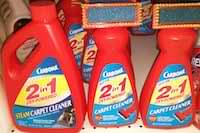
If your carpet needs a major cleaning and you want to do it yourself, you have two basic methods to choose from. You can use a cleaning product that is applied and then vacuumed up using your household vacuum cleaner, or you can get a specialized machine that will apply the cleaner and vacuum it up, or extract it, at the same time.
Carpet cleaning products used with your vacuum cleaner are readily available at supermarkets and home stores. These can include liquids and foams that are sprayed onto the carpet and powders that are sprinkled on. Powders are by far the easiest to use but may not penetrate down to the base of the pile as well or clean as well as foams and liquids. Foams and liquids can be messy to use and the carpet will take some time, usually overnight, to dry completely before the room can be used again. There's also the concern that too much liquid is left behind because the vacuum doesn't extract it effectively. This can result in mildew growth in the still-wet carpet backing, padding or floor causing lingering odors in the room or possible damage to the floor.
Carpet cleaning machines use hot water to spray a washing solution and then extract the liquid from the carpet along with the dirt, all at the same time. These machines, commonly called carpet steamers, can be more difficult to use than a vacuum cleaner and the dirty water will have to be dumped from time to time if you're working on a large area. Most carpet cleaners have a recommended cleaning solution made by the same manufacturer but any extraction type carpet cleaning solution will usually do as well. Some manufacturers will insist you use their cleaning solutions or it will void the warranty on the steamer, be sure to check. In addition to a basic cleaning solution, there are usually specialize products by the same brand for treating stains and pet damage.
About Carpet Steamers
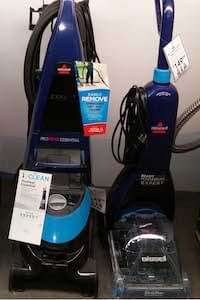
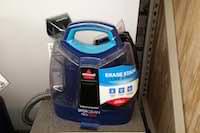
There are a number of hot water carpet cleaners on the market, all have similar features to make them versatile and easy to use. Prices begin at about $100 and can go up to over $1,000. If you have lots of carpets in your house, it can be cost effective and convenient to buy one of these machines to have around all the time. You can also rent a machine like this from a supermarket and larger, commercial grade machines are available from rental companies. These larger machines, however, are intended for industrial cleaning situations and would probably be overkill for the typical home user.
A typical home grade carpet steamer looks much like an upright vacuum cleaner. Some have a heating function that keeps the water hot as you work. In most cases, the tank for the cleaning solution and water is removable for easy filling. Handheld steamer machines are also available if you frequently need to clean in small, cramped areas like stairs. Some upright steamers may have a removable canister and motor to convert it to a smaller machine allowing for easier cleaning in tight spaces as well. A hose with agitator head is a typical feature on most handheld steamers making it possible to clean carpeting wherever it may be, including your car.
How to Clean Carpets
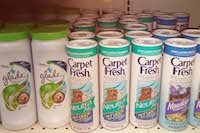
While a hot water cleaner will do a good job on the carpets in your home, all that water can soak through to the carpet padding, which can be hard to get completely dry again. It may also weaken the adhesive on the backing of some carpets. There's also a chance of damaging hardwood flooring underneath if moisture is trapped for an extended period. With these concerns, it may be best to just use a vacuuming powder for average cleaning jobs.
Using Vacuum Carpet Cleansers
Start by doing a thorough vacuuming to remove all the large, loose dirt particles. Read the label instructions for the cleaner you're using and follow the recommendations. If you're using a powdered cleaner, sprinkle it evenly around the carpet and work it in with a soft bristled brush. Wait the recommended time for the powder to work and then use your vacuum cleaner to remove it. It's best to vacuum the whole carpet once, remove the bag or filter from the machine, and then go over the whole thing again with a clean bag or filter installed to remove all the powdered cleaner. Don't leave any residual powder behind as it may cause problems later if the carpet ever gets very wet.
If you're using a foam or liquid, apply it following the label instructions. When you're ready to extract it, use a vacuum suitable for the job. A large wet/dry shop-vac may be the best choice because it will have good suction to aid in complete extraction and it is designed to collect water without harming the machine. Check before using your household vacuum cleaner to be sure the manufacturer doesn't have a warning against using it with liquid carpet cleaners.
Using a Hot Water Carpet Cleaner
As with any carpet cleaning method, give the room a good vacuuming first. If you're using a pre-cleaner or treatment for stains, apply it following the label instructions before beginning with the machine.
Fill the tank with hot water mixed with the recommended amount of cleaning solution. Run the cord from the machine so it will trail behind you as you work. It's best to work from one end of the room, going across in a straight line, backtracking, and starting a new parallel run as you work your way across the carpet.
Start by applying the liquid to the carpet, this is usually done by pressing a lever as you push the machine across the room. Return to the starting position again and immediately extract the water by releasing the lever and repeating your path across the room. It can be a good practice to go over the same swath again in extraction mode to be sure all possible liquid is removed.
Move across the room like this, one section at a time, overlapping the previous pass by just a bit to be sure you don't miss anything. Be sure to do the extra extraction pass for the best results. The best way to get a truly clean carpet is to remove all possible liquid so test to be sure the carpet is as dry as you can get it by running your hand over it. If your hand comes away with visible droplets of water, the carpet is still too wet. If it comes away slightly damp, you've done a good job of removing the water and you can just wait for it to dry.
How to Clean Area Rugs
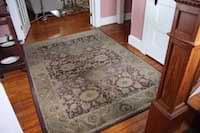
Some small, rag-type area rugs can be washed in a washing machine, check the label to verify this before proceeding. There's always a chance of damage from the agitation process in the machine, so don't try this with a rug you're really fond of. Other types of area rugs can be cleaned with a powder or foam cleaner that you vacuum up just like the carpet cleaning describe above. If you're just doing a routine cleaning, the powder/vacuum method is the safest, most economical way to go.
Beyond the DIY approach, there are rug cleaning services that will do a great job of cleaning your area rugs. Most have a pickup and drop-off service as well as the cleaning service. If you have a really tough cleaning job, it may be best to go this route to be assured of the best results.
Stain Removal for Carpets and Rugs
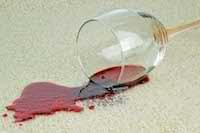
The best way to remove a stain is to get to it as soon as possible. Most carpets and rugs have some stain resistance qualities but if any staining liquid is allowed to sit for too long, it will leave a mark. Use a white towel or paper towels to blot up liquid spills. Don't rub or scrub, just press firmly on the towel to soak up the liquid. Repeatedly move to a clean, dry spot on the towel and press down hard to blot until you've gotten as much liquid up as possible. Standing on the towel can be very affective in applying much more pressure and absorbing much more liquid than you can with your hands alone.
After you've soaked up as much of the spill as possible, pour a small amount of clean water on the spot and use another clean white towel to blot it up. Use the same method of moving to a clean spot on the towel and pressing hard each time to absorb all the water possible. If all visible staining is gone after this treatment, let the spot dry.
If the stain is still visible, try mixing a few drops of dishwashing liquid with a liter of warm water and use the same process of pouring and blotting with a clean, white towel. If the stain is gone, rinse the spot with clean water and blot it up. If this doesn't do the job, it's time to pull out the steamer and carpet stain remover.